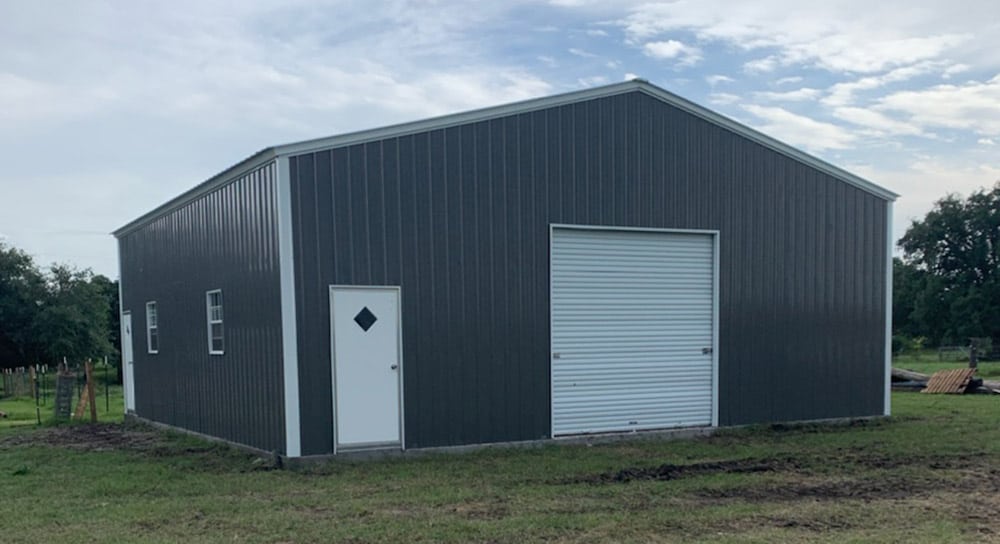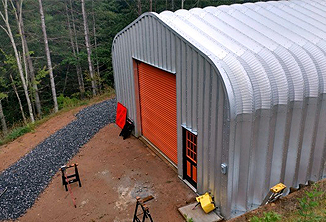Trusted Steel Buildings: Proven Solutions for Agricultural, Industrial, and Residential Needs
Trusted Steel Buildings: Proven Solutions for Agricultural, Industrial, and Residential Needs
Blog Article
Specialist Guide to Steel Structure Design: Optimizing Performance and Durability
In the world of construction, the choice of building product holds critical importance in figuring out the efficiency and longevity of a framework. Steel, with its extraordinary toughness, resilience, and versatility, has emerged as a preferred choice for contemporary structure style. Designers and designers are continuously discovering cutting-edge ways to harness the potential of steel in constructing long-lasting and sustainable buildings. From optimizing design considerations to implementing cost-effective building and construction methods, the journey towards taking full advantage of effectiveness and durability in steel building style is a multifaceted one, providing a blend of practical obstacles and creative solutions that thrust the market ahead.
Advantages of Steel Buildings
Steel buildings offer unmatched sturdiness and cost-effectiveness contrasted to standard building and construction materials. The toughness of steel gives superb structural stability, making it a recommended selection for buildings that require to stand up to harsh climate conditions or heavy tons. Steel is highly immune to pests, mold and mildew, and fire, making sure a longer life-span with marginal upkeep demands. In addition, steel is a sustainable material, as it is totally recyclable and can be repurposed at the end of its helpful life.
In terms of cost-effectiveness, steel structures are commonly a lot more budget-friendly than frameworks made from other products. The efficient building and construction process of steel structures can cause minimized labor expenses and much shorter task timelines. Steel's sturdiness additionally equates to reduce maintenance costs over time, as there is less demand for repair services or replacements compared to typical building products.
Design Considerations for Efficiency
Offered the benefits of steel buildings in terms of toughness and cost-effectiveness, it is important to focus on design considerations that make the most of effectiveness and durability. When developing a steel structure for optimal efficiency, aspects such as the alignment, insulation, and design should be carefully considered.

Moreover, integrating energy-efficient systems, such as heating and cooling, illumination, and renewable resource sources, can additionally enhance the performance of steel buildings. By incorporating these style considerations, steel frameworks can accomplish optimum effectiveness and durability, offering sustainable and economical services for different building projects.
Architectural Stability and Longevity

Furthermore, the option of top notch steel and coverings is important for longevity. Corrosion-resistant layers shield against corrosion and degeneration, lengthening the life of the framework. Regular upkeep, consisting of evaluations for signs of wear or damages, is also vital for identifying and addressing problems prior to they endanger more tips here the building's integrity. By prioritizing architectural integrity in the style stage and throughout the building's life expectancy, proprietors can ensure their steel frameworks remain risk-free, reliable, and sturdy for several years to come.
Economical Construction Methods
Reliable building approaches play an essential duty in managing expenses without jeopardizing the high quality and integrity of steel building projects. One economical approach is the use of pre-engineered steel building systems. These systems are created off-site and afterwards constructed on-site, decreasing building and construction time and labor prices. In addition, pre-engineered steel structures are known for their toughness and require marginal maintenance, leading to long-lasting expense financial savings.
One more economical method is the design-build method, where the design and construction phases are incorporated. This technique fosters collaboration in between the style and building teams, simplifying the procedure and lessening delays and price overruns (steel buildings). By entailing all stakeholders from the beginning, possible issues can be recognized and dealt with early, saving both money and time
Moreover, adopting sustainable building practices, such as utilizing recycled steel and incorporating energy-efficient attributes, can result in substantial expense financial savings in the future. These techniques not only lower building waste yet likewise lower operational prices via enhanced power effectiveness. To conclude, applying economical construction techniques is important for making best use of effectiveness and ensuring the longevity of steel structure tasks.
Maintenance Tips for Durability
Correct maintenance techniques are vital for ensuring the long life and structural honesty of steel structures. Routine examinations are necessary to recognize any signs of deterioration, damage, or put on that might compromise the building's sturdiness. As component of an extensive upkeep plan, it is important to without delay resolve any type of issues that develop to stop them from rising and creating extra extensive damages.

Another vital maintenance tip is to evaluate the building's welds, bolts, and connections to guarantee they are safe and secure and in excellent problem. Any kind of broken or loosened elements should be repaired or replaced immediately to maintain the structural honesty of the building. By implementing a positive upkeep routine, steel building owners can make best use of the durability and view it now performance of their structures.
Final Thought
To conclude, steel structures supply many advantages such as efficiency, long life, and cost-effectiveness. By carefully considering style aspects, ensuring structural honesty, and making use of cost-efficient construction methods, steel structures can be optimized for optimal efficiency and long life. Routine upkeep is likewise essential to making sure the durability of a steel building. In general, steel buildings are a long lasting and trustworthy alternative for numerous construction jobs.
From enhancing layout considerations to applying cost-efficient building techniques, why not try this out the trip in the direction of taking full advantage of efficiency and long life in steel structure design is a diverse one, supplying a blend of useful obstacles and imaginative options that move the sector onward.
Provided the advantages of steel buildings in terms of sturdiness and cost-effectiveness, it is important to concentrate on design factors to consider that make the most of efficiency and long life. When designing a steel building for optimum efficiency, aspects such as the layout, alignment, and insulation need to be thoroughly thought about. In verdict, carrying out cost-efficient construction techniques is crucial for maximizing effectiveness and making certain the longevity of steel building tasks.
By thoroughly taking into consideration style facets, guaranteeing structural stability, and making use of cost-efficient building and construction techniques, steel structures can be optimized for optimal efficiency and durability.
Report this page